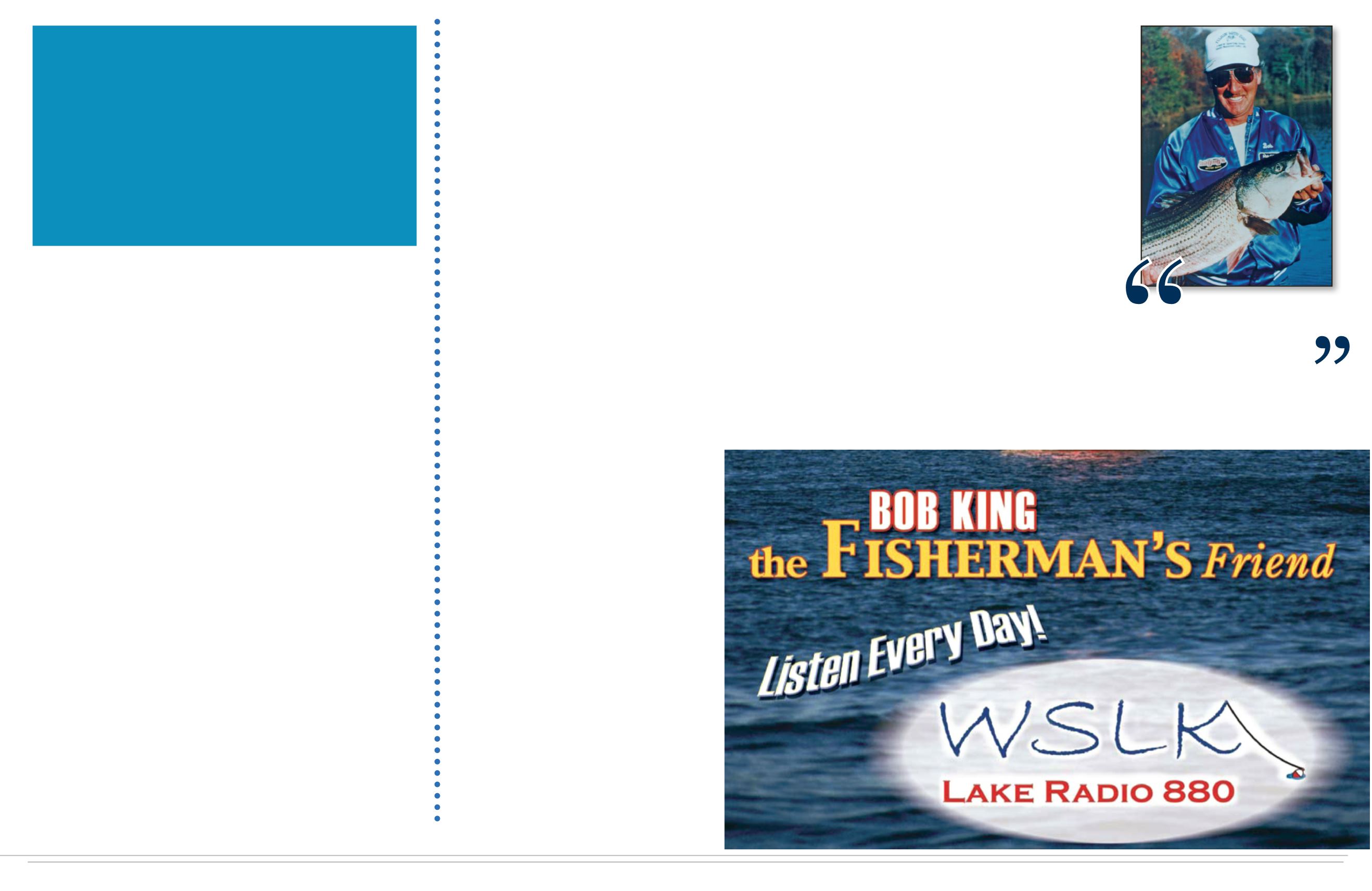
Discover Smith Mountain Lake
WINTER 2016
23
22
Our bodies respond to changes
in barometric pressure. All
animals notice it.
BAROMETRIC PRESSURE
is defined as the weight or
mass of an entire column on
a unit of surface area at sea
level. It is an important factor in
weather observations, because
it indicates the movement of
weather fronts and systems. A
typical barometer uses liquid
mercury (Hg) to measure air
pressure changes in inches (in.).
If we put liquid mercury into a
U-shaped tube that is open to the
atmosphere at one end. When
the air pressure rises, it pushes
the mercury higher into the
closed end of the tube. When the
air pressure drops, so does the
mercury level.
Barometric pressure is measured
in millibars (mb), with a “bar”
being roughly equivalent to one
atmosphere of pressure (one
atmosphere equals 1.01325
bars). One bar is equivalent
to 29.6 inches of mercury. A
barometer reading of 30 inches
is considered normal. A very high
pressure system might register
as high as 30.70 inches, and an
extreme low pressure system
such as a hurricane can dip
below 27.30 inches. (Hurricane
Andrew had a measured surface
of 27.23 just before its landfall in
Miami Dade County).
A typical high-pressure, cold
air winter system moving out of
Canada might show a barometer
reading of 30.71 (1040 millibars),
whereas Miami enjoys a typical
average pressure of 29.7 inches
of mercury (1013 millibars).
In general, low atmospheric
pressure usually indicates
approaching weather systems,
such as cold and warm fronts,
tropical waves, and rain. We
normally experience high
atmospheric pressure after those
types of systems pass. When
high pressure settles over a
particular area, we can usually
count on pleasant weather and
calm waters.
Did you ever hear
someone say that the
weather is changing
because they can feel it
in their bones?
the front to pass, and normal
activity resumes.
For example, let’s say that
we have been having great
success on a beautiful high
pressure day. Along comes a
cold front, heading right for
us. A low pressure system
immediately precedes the front.
The fish will sense the drop
in air pressure in advance. So
right before the barometer
falls, the fish will adjust their
feeding patterns. They’ll usually
hit the bait hard right before
the pressure drops. As it does,
their discomfort overtakes their
appetites, and they start to
lose interest in feeding. After
the front has passed, and the
atmospheric pressure rises
again, it may take them at least
a full day to adjust back to their
normal inclinations.
A day or two later, under high
pressure conditions, they can
return to more frenzied feeding
behavior. As the weather cycles,
so do the habits of the fish.
I have seen schools of stripers
go into a feeding frenzy right
before a front moves in, even
seeing flashes of lightning
ahead of me and the fish. The
action would then drop sharply
when the front arrived.
Fishing on Smith Mountain
Lake in the Winter Months
The water temperature in the coves should be below 50
degrees in winter, and this is the ideal time to fish there
just prior to daylight. Cast your lure on the surface, and
reel in very slowly. I recommend using 6” to 7” surface
minnows . You will be able to see a “V” pattern on the
surface as you retrieve your lure. Do not allow your lights
to shine on the water.
Once the sun rises, the fish move to the channel, and
trolling for them with jigs and diving plastic minnows
works well. I like to use lead line for depth control.
Remember to pay attention to the moon phases.
Stay warm, and before going fishing make sure that you
are familiar with the local and state regulations. Always
be aware what is legally required before setting out on
the water, including getting the proper licenses, and also
knowing which species are in season.
Good Luck &
Take a kid fishin’!
BOB KING
Questions? Send me an e-mail!


